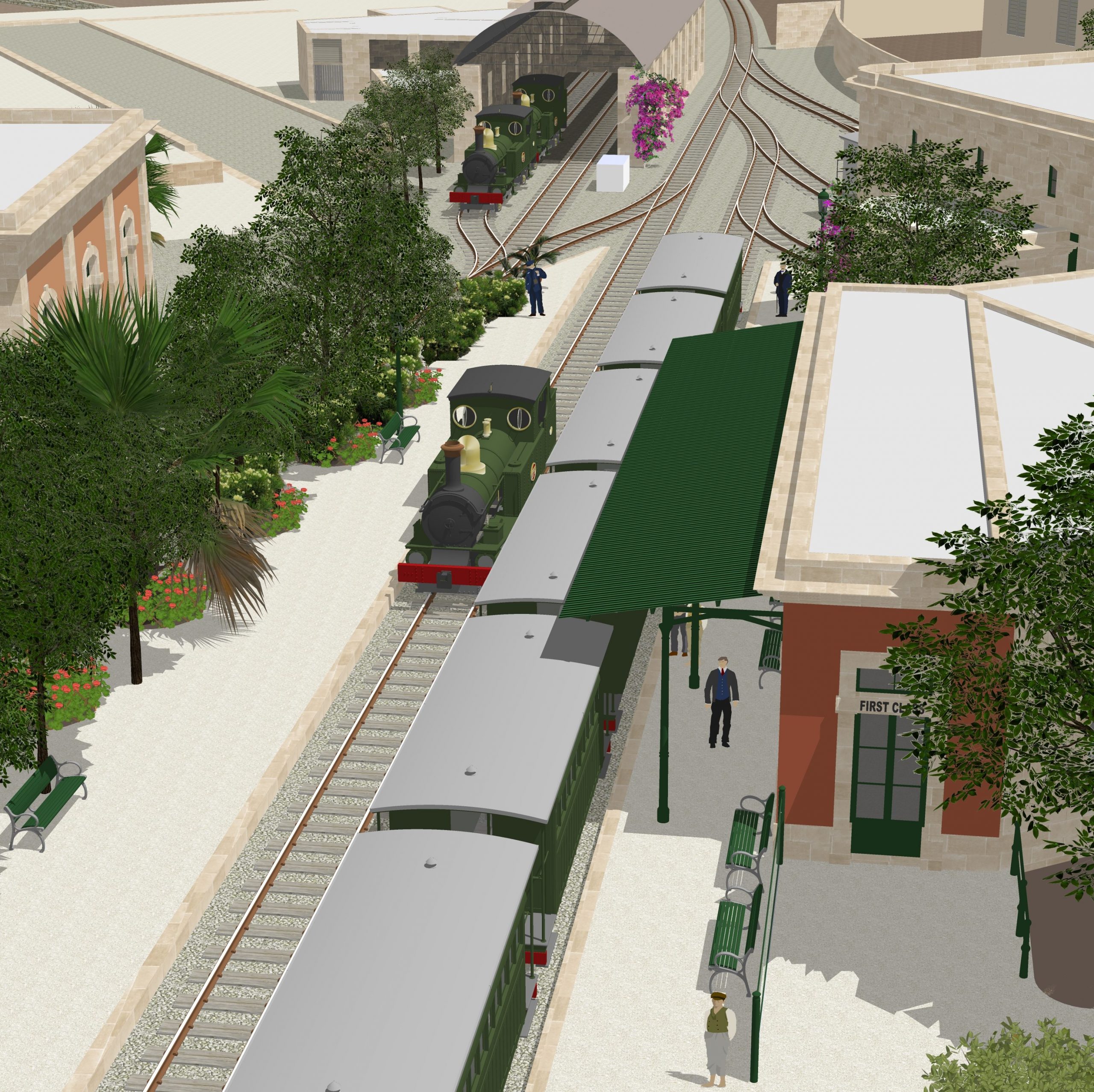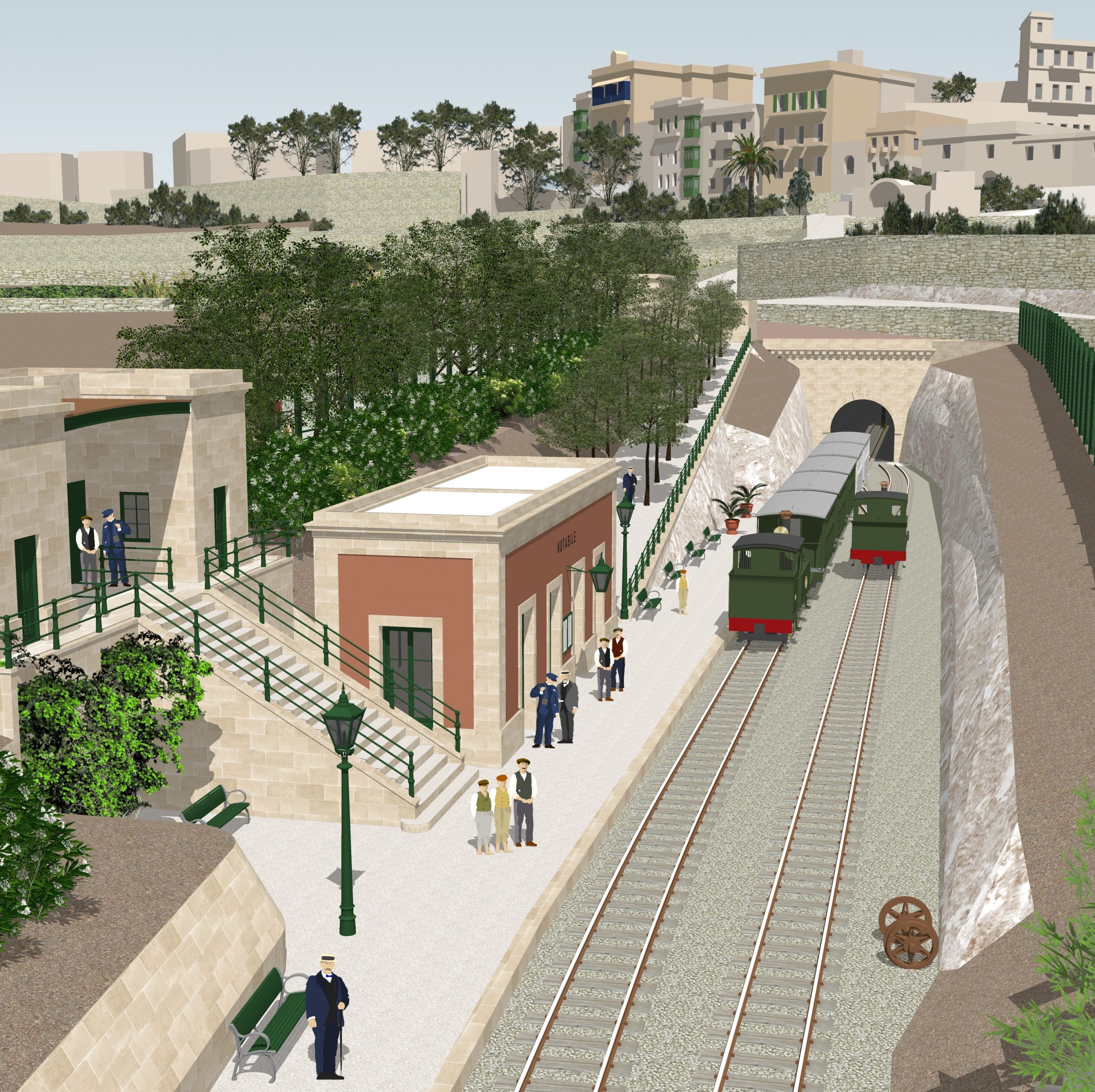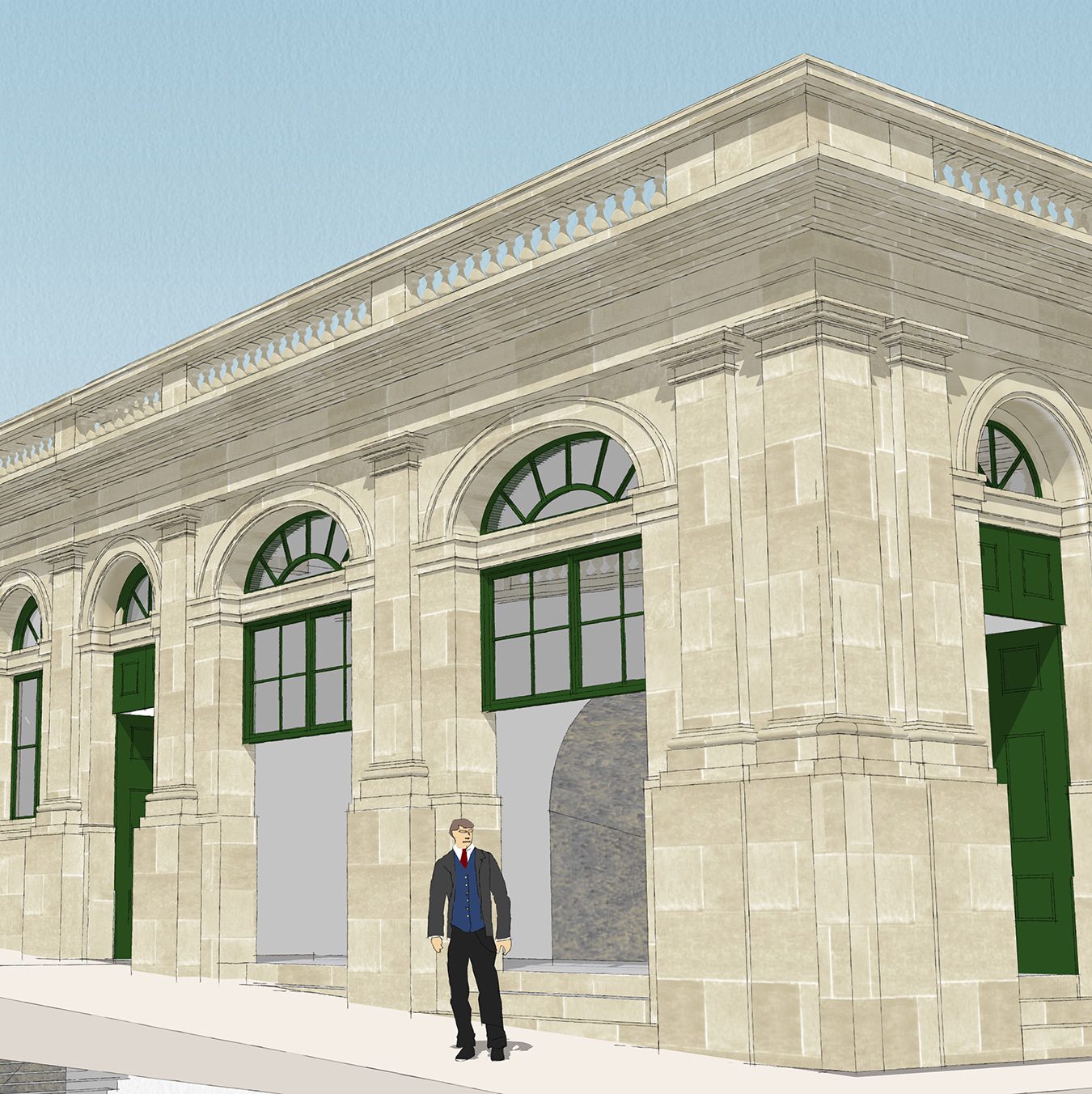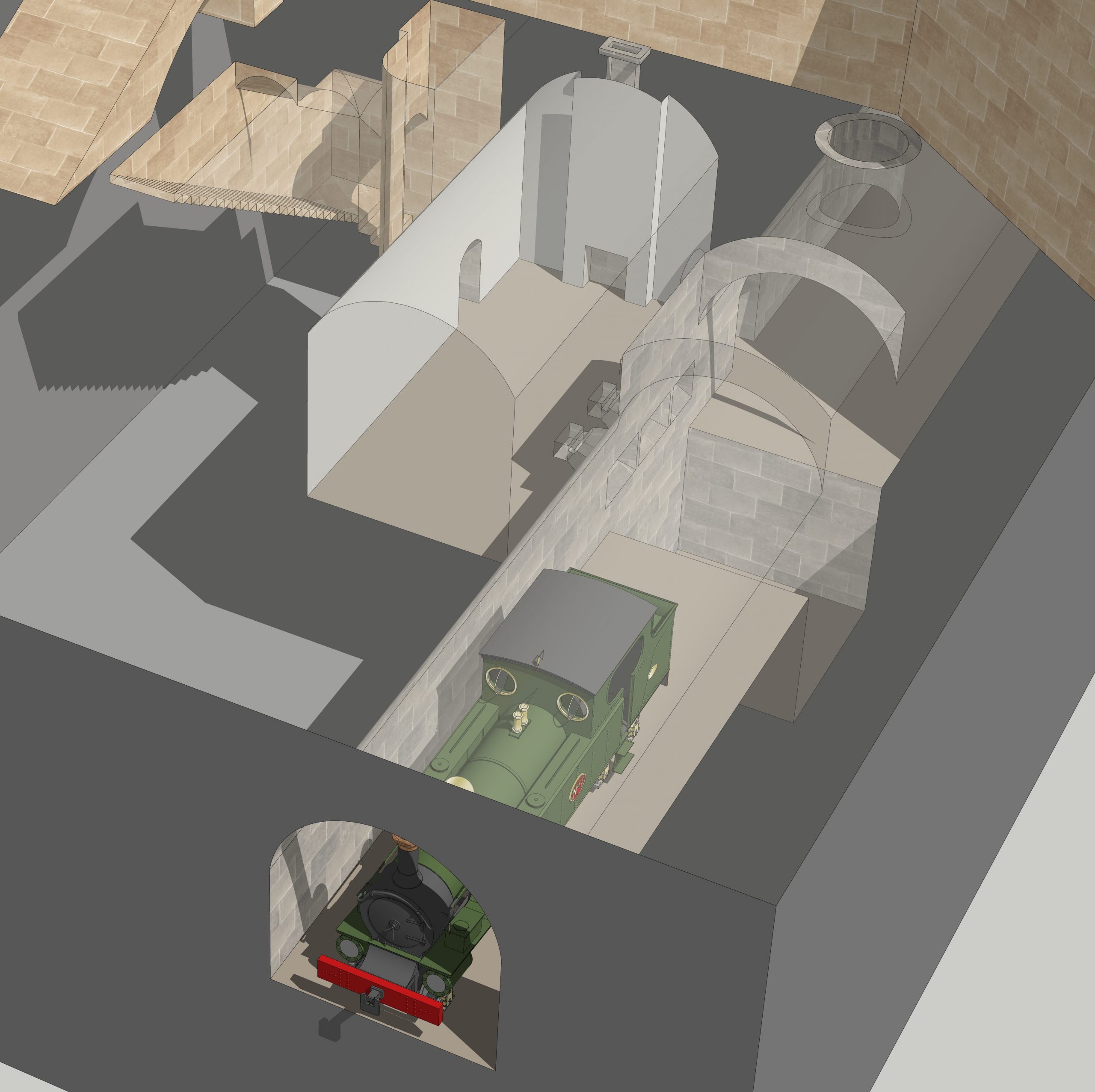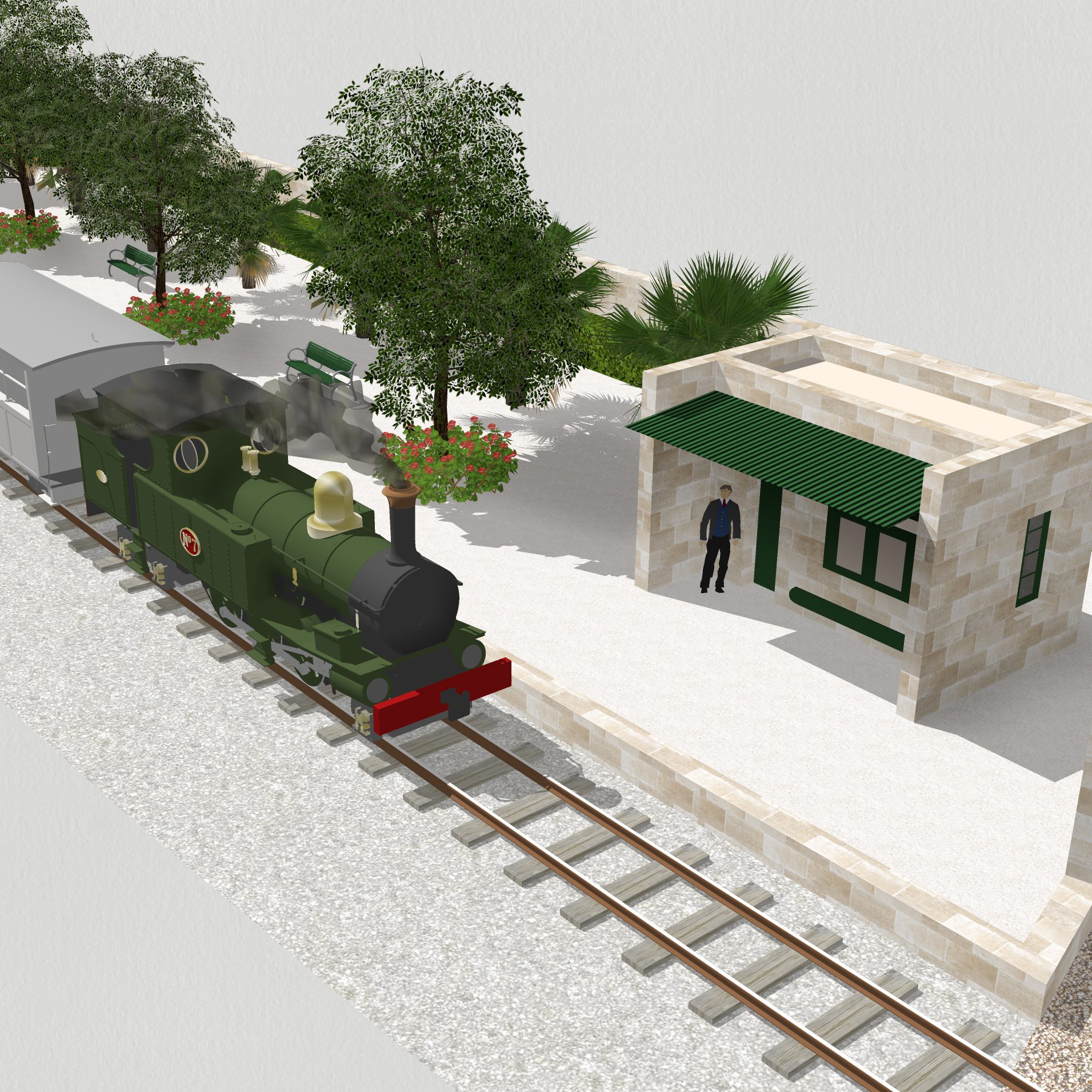Recreating the Line
Based on original drawings, photos, and documents, some of the lost and forgotten features of the Malta Railway are revived in this series of digital scale models.
For anyone who’s tried to trace the Railway’s surviving buildings and structures, having found them it’s often difficult to visualise how they once appeared. Hamrun, for example, retains some of its most significant structures, but having lost several others, had its boundaries changed, and more recent buildings erected with no relationship to the original layout, the site’s significance can be difficult to appreciate. Though many photographs and some drawings survive to illustrate some features of Notabile station, the site today is unrecognisable; the infilling of the cutting and erection of unrelated new buildings has fragmented and obscured what does survive, confounding any real appreciation of the historic site.
Why model the railway?
The building of models can be an accessible and engaging way of explaining what’s lost and help interpretation. Thanks to the National Archives of Malta making their extensive set of original railway drawings available through their online catalogues, the ease and ability to study the railway structures has never been greater. These scale drawings allow the reconstruction of many of the buildings with confidence and accuracy. The accessibility of free and intuitive computer modelling apps, like SketchUp, allows the enthusiast to recreate complex 3D environments based on original measured drawings and maps and supplemented by photographs and documentary evidence where gaps remain in accurate data.
What’s here?
On this page you’ll find links to images and descriptions of several reconstructions of Malta Railway sites. Some models were built as comprehensive landscapes to provide new perspectives, others have been constructed in a more diagrammatic form to help explain particular aspects. Each, we hope, is the most accurate depiction of the stations and structures yet created. The process of building these models often focuses on overlooked or obscure features, ultimately leading to new revelations and allowing for new interpretations to be made. In this way, models can be as much part of the research process as a product of it.
